This post aims to answer a simple question about neural nets, at least on a small toy dataset. Does it matter if you train a network, and then prune some nodes, or if you prune the network, and then train the smaller net.
What exactly is pruning.
The simplest way to remove a node from a neural net is to just delete it. Let be the function from one layer of the network to the next.
Given and as the set of indicies that aren't being pruned, this method is just
however, a slightly more sophisticated pruning algorithm adjusts the biases based on the mean value of in the training data. This means that removing any node carrying a constant value doesn't change the networks behavior.
The formula for bias with this approach is
This approach to network pruning will be used throughout the rest of this post.
Random Pruning
What does random pruning do to a network. Well here is a plot showing the behavior of a toy net trained on spiral data. The architecture is

And this produces an image like

In this image, points are colored based on the network output. The training data is also shown. This shows the network making confidant correct predictions for almost all points. If you want to watch what this looks like during training, look here https://www.youtube.com/watch?v=6uMmB2NPv1M
When half of the nodes are pruned from both intermediate layers, adjusting the bias appropriately, the result looks like this.
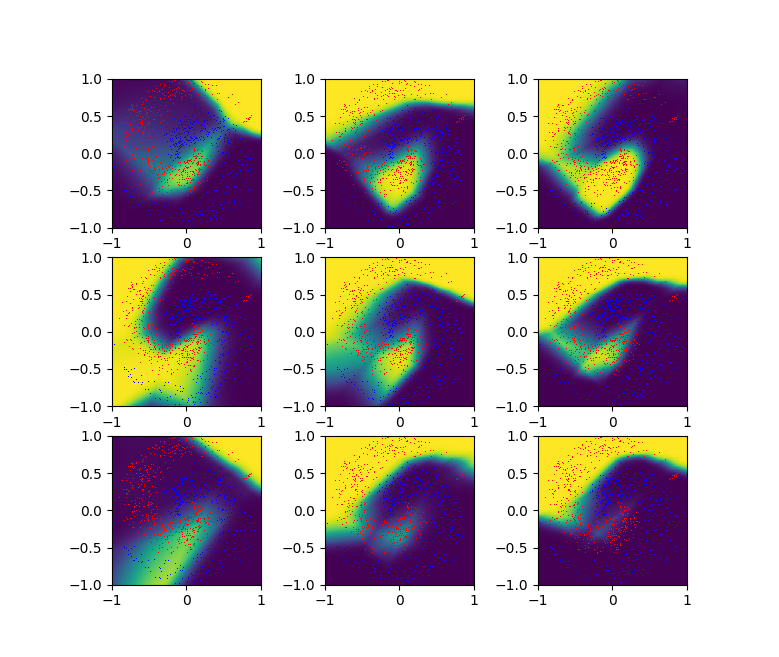
If you fine tune those images to the training data, it looks like this. https://youtu.be/qYKsM29GSEE
If you take the untrained network, and train it, the result looks like this. https://www.youtube.com/watch?v=AymwqNmlPpg
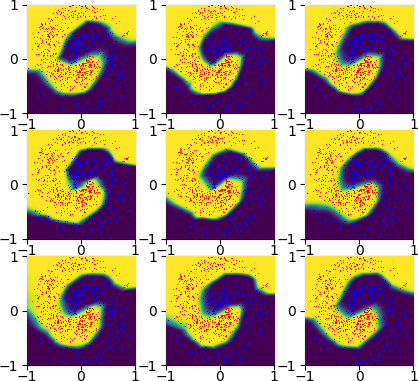
Ok. Well this shows that pruning and training don't commute with random pruning. This is kind of as expected. The pruned then trained networks are functional high scoring nets. The others just aren't. If you prune half the nodes at random, often a large chunk of space is categorized wrongly. This shows that the networks aren't that similar. This is kind of to be expected. However, these networks do have some interesting correlations. Taking the main 50x50 weight matrixes from each network and plotting them against each other reveals.
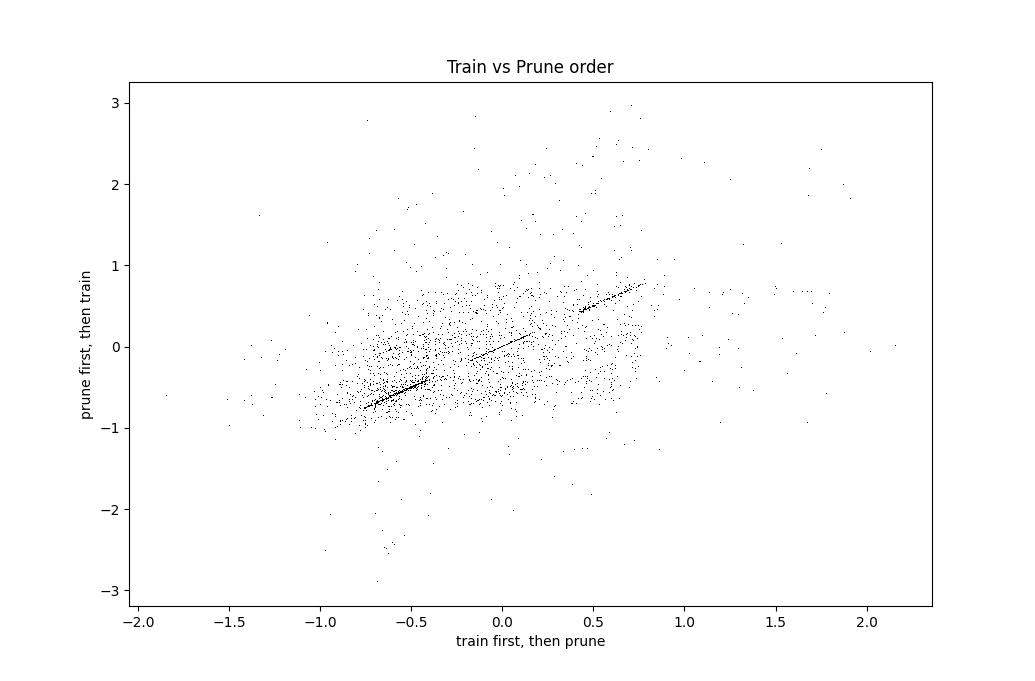
Same plot, but zoomed in to show detail.
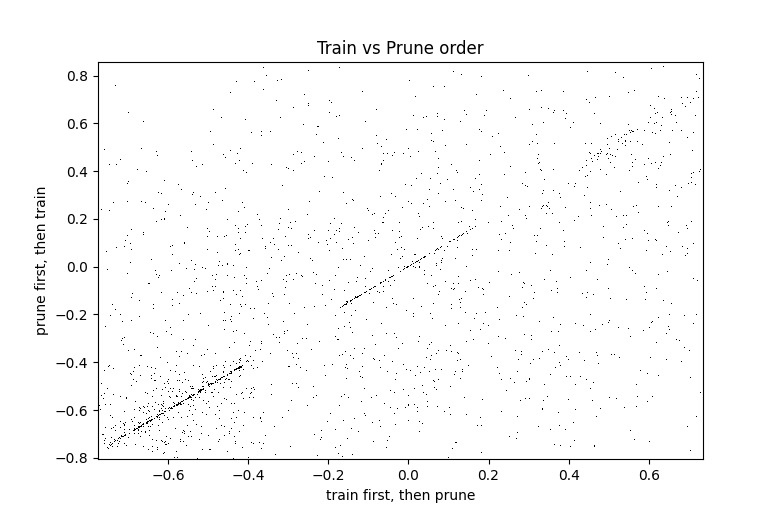
Notice the dashed diagonal line. The middle piece of this line is on the diagonal to machine precision. It consists of the points that were never updated during training at all. The uniform distribution with sharp cutoffs is simply due to that being the initialization distribution. The upper and lower sections consist of points moved about ±0.59 by the training process. For some reason, the training process likes to change values by about that amount.
Nonrandom Pruning
A reasonable hypothesis about neural networks is that a significant fraction of neurons aren't doing much, so that if those neurons are removed then the network will have much the same structure with or without training. Lets test that by pruning the nodes with the smallest standard deviation.
This pruning left an image visually indistinguishable from the original. entirely consistent with the hypothesis that these nodes weren't doing anything.
When those same nodes are removed first, and the model is then trained, the result looks like this.
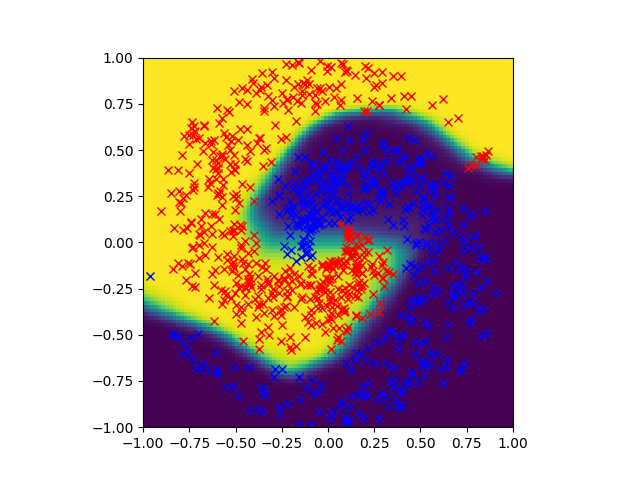
Similar to the trained and then pruned (see top of document), but slightly different.
Plotting the kernels against each other reveals
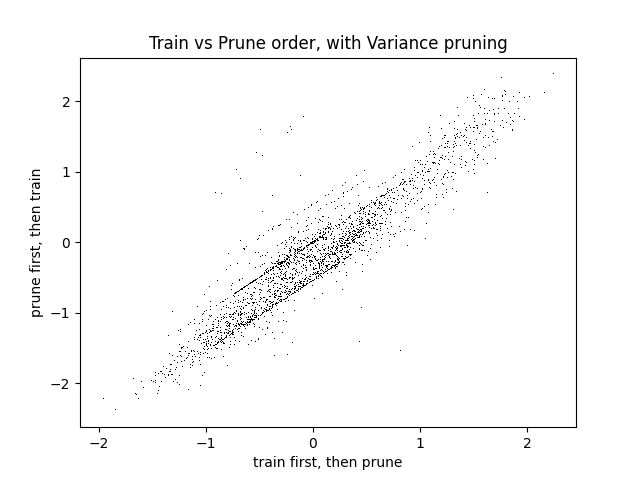
This shows a significant correlation, but still some difference in results. This suggests that some neurons in a neural net aren't doing anything. No small change will make them helpful, so the best they can do is keep out the way.
It also suggests that if you remove those unhelpful neurons from the start, and train without them, the remaining neurons often end up in similar roles.